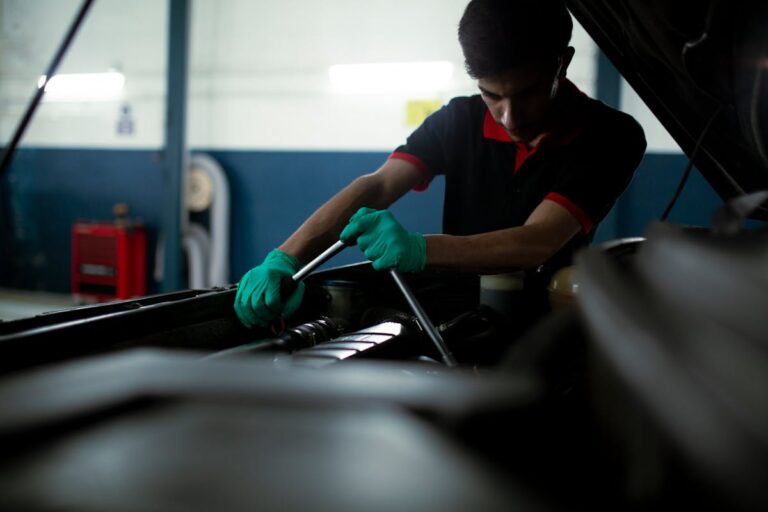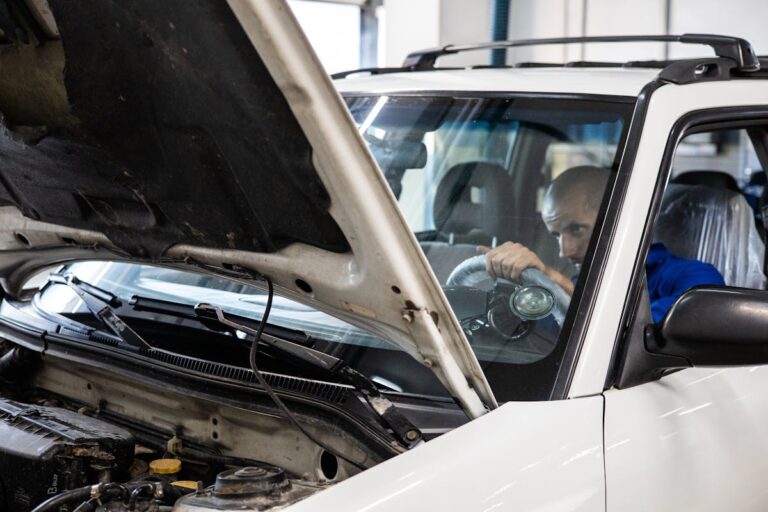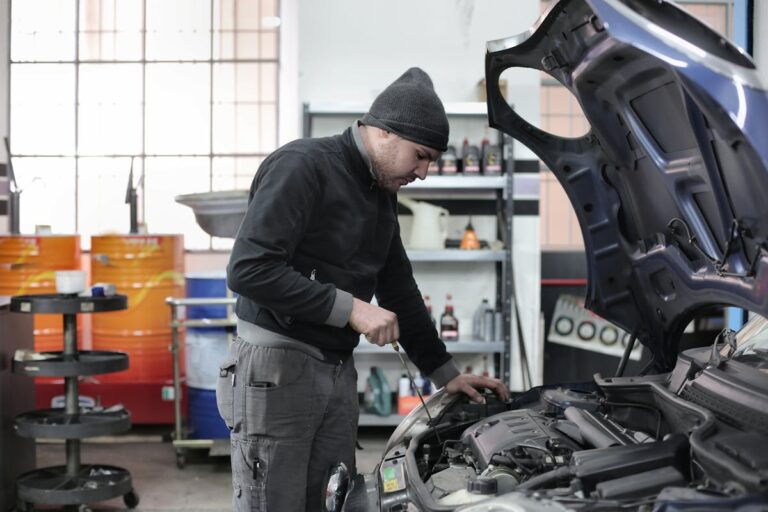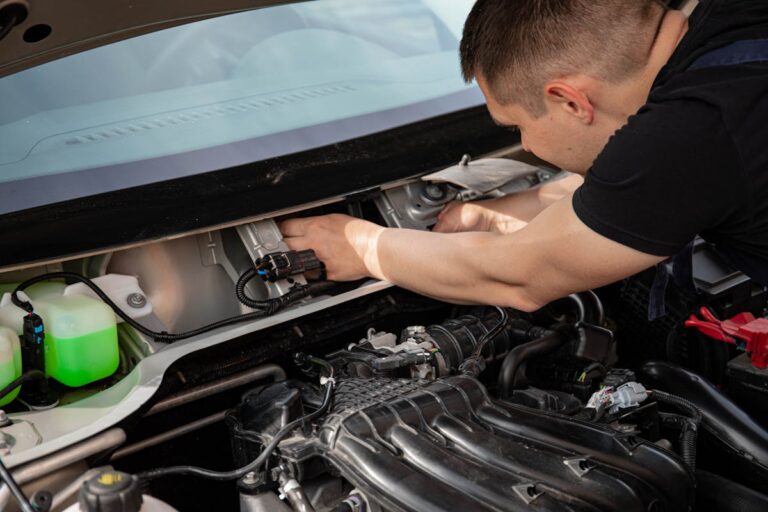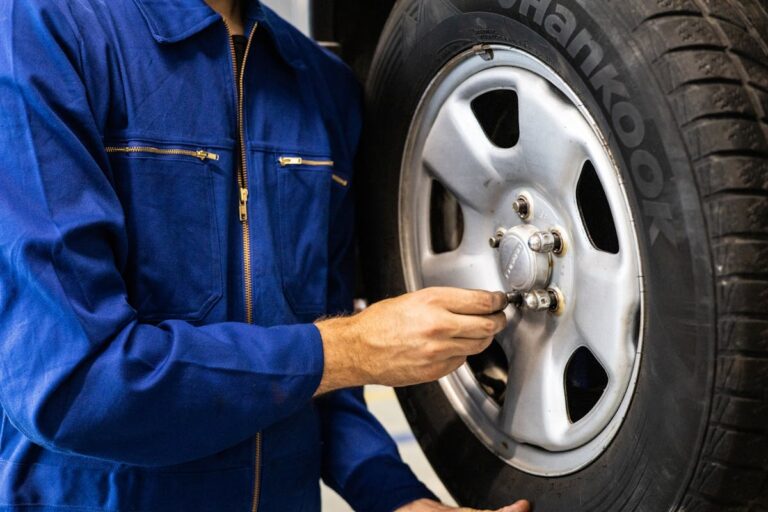The replacement of a vehicle’s timing belt or chain is a topic of considerable significance, yet often overlooked by many vehicle owners. These components play an essential role in synchronizing the engine’s functions and ensuring peak performance. While manufacturer recommendations provide a general guideline, the actual need for replacement can vary based on multiple factors such as the vehicle’s make, model, driving conditions, and maintenance history. This prompts the inquiry, how do we accurately determine the right time for a timing belt or chain replacement? The ensuing discussion will explore this in detail, providing important insights for vehicle owners.
Understanding Timing Belts and Chains
The intricate engineering of a vehicle encompasses numerous key components, among which the timing belt or chain holds paramount importance. These elements play a significant role in the workings of the engine, ensuring the synchronization of the engine’s valves and pistons.
There are various timing belt types, each designed with a specific vehicle model and engine type in mind. For instance, timing belts are typically made of rubber and are equipped with high-tensile fibers for strength. Some more advanced models feature a curvilinear tooth design that mitigates noise and increases the belt’s lifespan. Understanding the type of timing belt your vehicle requires is essential for ideal performance and longevity.
Chain maintenance is another critical aspect of engine care. Unlike belts, timing chains are typically made of metal and are designed to last the lifespan of the engine. However, they do require regular lubrication to prevent wear and tear. Neglecting this can result in increased engine noise, decreased performance, and potentially severe engine damage. Consequently, understanding the role and maintenance needs of timing belts and chains is vital for any vehicle owner.
The Role of Timing Belts and Chains
Integral to the smooth operation of a vehicle, timing belts and chains perform a critical function in the engine’s mechanism. These components are responsible for synchronizing the movement of the engine’s camshaft and crankshaft. This synchronization guarantees that the engine’s valves open and close at the correct times during each cylinder’s intake and exhaust strokes.
The timing belt, typically made of rubber, is a toothed belt that connects the crankshaft to the camshaft. Its purpose is to control the timing of the engine’s valves. On the other hand, a timing chain, made of metal, plays a similar role but is generally used in higher performance vehicles due to its increased durability.
Both the timing belt and chain require regular maintenance to guarantee their longevity and the overall health of the engine. Chain maintenance, for instance, involves regular oil changes as the timing chain is lubricated by the engine oil. Meanwhile, timing belts need periodic replacement according to the vehicle manufacturer’s recommendations. Neglecting such maintenance can cause severe engine damage, making it indispensable to the vehicle’s operation.
Signs of a Failing Timing Belt or Chain
Recognizing the signs of a failing timing belt or chain is essential for maintaining the health and performance of your vehicle’s engine. Unusual engine noises and decreased engine performance are key indicators that this vital component may be nearing the end of its service life. In the following sections, we will examine these symptoms in greater detail and discuss how they directly impact the operation of your engine.
Unusual Engine Noises
A significant number of motorists often overlook the crucial warning signs of a failing timing belt or chain, one of which is the presence of unusual engine noises. These sounds typically manifest as ticking, rattling, or even a high-pitched whine, especially during vehicle start-up or under load. They are primarily caused by the timing belt or chain becoming loose, stretched, or worn out, resulting in it not properly engaging with the engine’s gears.
Unusual clattering, a specific type of engine noise, could also indicate a timing chain issue. This noise is often more pronounced when the engine is cold and may decrease as the engine warms up. It’s important to address this promptly, as continued operation may cause severe engine damage.
Another audible sign is the presence of engine vibrations, which can be felt as well as heard. This is usually due to the timing belt or chain synchronizing improperly with the engine’s pistons and valves. When this synchronization is off, the engine runs unevenly, leading to noticeable vibrations.
Decreased Engine Performance
Moving from audible signs to performance-based indicators, the state of the timing belt or chain can also be inferred from the overall engine performance. One such prominent indicator is the decreased engine performance resulting from a failing timing belt or chain. This performance degradation is primarily observable in two phenomena: engine stuttering and power loss.
Engine stuttering is a noticeable symptom of a malfunctioning timing belt or chain. The engine rhythm becomes irregular and inconsistent, leading to a jerky, stuttering motion. This is due to the timing belt or chain’s inability to maintain a steady rhythm of opening and closing the engine valves, resulting in an inconsistent fuel-air mixture entering the combustion chamber.
Power loss, on the other hand, is a more tangible symptom. The vehicle’s acceleration diminishes, and it struggles to maintain speed, especially while climbing inclines or carrying heavy loads. This is due to the inefficient combustion process, caused by an irregular fuel-air mixture, which fails to generate the required power.
These symptoms are serious indications of a failing timing belt or chain. Ignoring them can result in catastrophic engine failure, necessitating costly repairs or complete engine replacement. Consequently, immediate attention and action are warranted when these symptoms are observed.
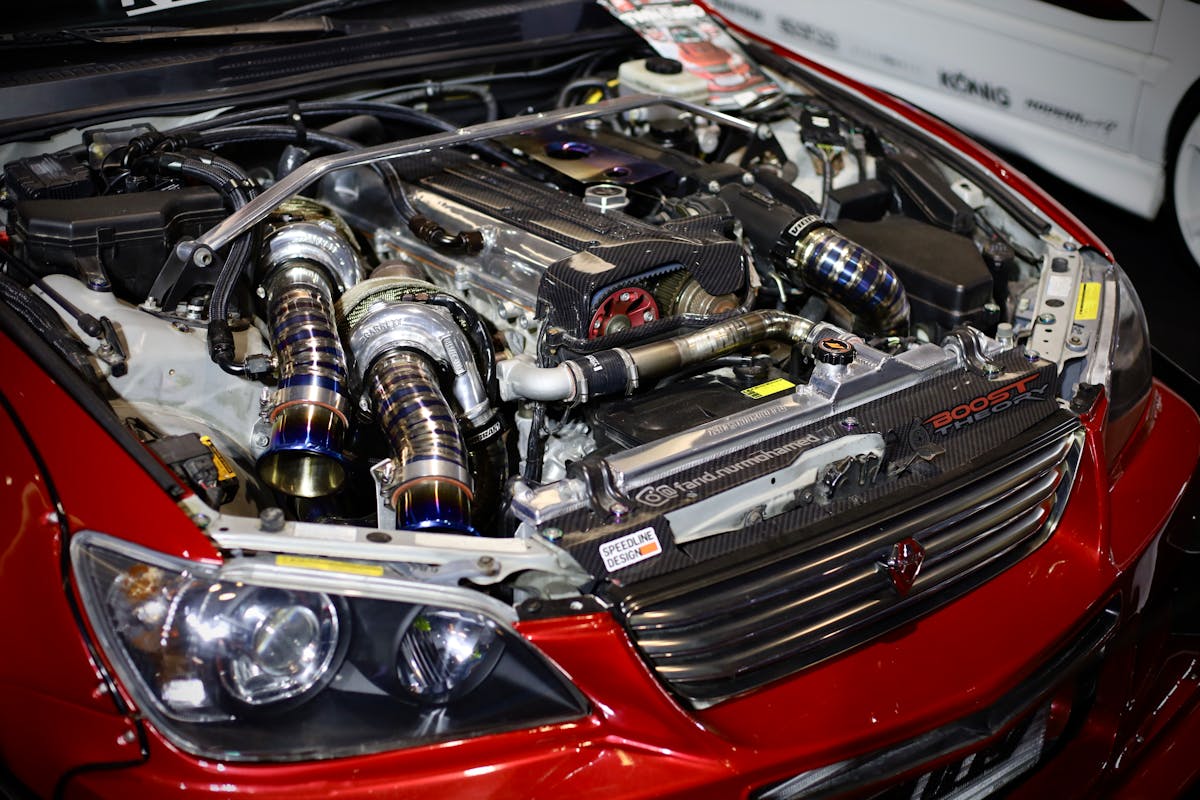
The Importance of Timely Replacement
Timely replacement of the timing belt or chain is essential to prevent potential engine damage and maximize the lifespan of the vehicle. Ignoring the signs of wear can lead to disastrous consequences like engine failure, resulting in costly repairs. This section will elucidate the importance of addressing these issues promptly, the expected lifespan of a timing belt and the repercussions of negligence.
Identifying Potential Damage
Engine damage, a dreaded scenario for any vehicle owner, can be the unfortunate consequence of a neglected timing belt or chain. Identifying potential damage early can prevent catastrophic engine failure, saving both time and money. A thorough visual inspection is a primary, practical approach to assess the condition of a timing belt or chain.
During the visual inspection, look for signs of wear and tear such as cracking, glazing, or noticeable slack. A timing belt with stripped teeth or a chain with loose links indicates significant damage. Additionally, if the belt or chain looks shiny or glazed, it means it has become hard and is likely to break.
The damage assessment should not stop there. Listen for a ticking noise coming from the engine, this could be a sign of a loose timing belt or chain. Furthermore, if the vehicle has trouble starting, or if there are misfires or loss of power while driving, these are strong indicators of potential damage.
Timing Belt Lifespan
Understanding the lifespan of a timing belt or chain is vital for maintaining ideal engine performance and longevity. The lifespan is typically influenced by the timing belt materials and the specific conditions under which your vehicle operates.
Timing belts are made from durable rubber compounds, often reinforced with high-strength fibers. Despite this, they are subject to wear and tear over time. Weather conditions, the vehicle’s usage, and the engine’s overall condition can impact the lifespan of your timing belt.
Replacement intervals are often suggested by the vehicle’s manufacturer, usually ranging from 60,000 to 100,000 miles. However, these intervals are not set in stone. They should be considered as guidelines, not rigid rules.
To guarantee effective car maintenance, remember these points:
- Check your vehicle manual for the manufacturer’s recommended replacement intervals.
- Regularly inspect your timing belt for signs of wear.
- Remember that timing belt materials age, even if the car is not in use.
The timing belt’s lifespan is a vital aspect of your vehicle’s overall health. Regular inspections and timely replacements will prevent costly repairs and maintain peak engine performance.
Consequences of Negligence
While the lifespan of the timing belt is a key factor in ideal vehicle performance, overlooking the importance of its timely replacement can have severe implications. A timing failure, for instance, can cause the engine to shut down abruptly. This sudden stop not only poses a safety risk but also may lead to significant engine damage.
When the timing belt or chain breaks, the synchronisation between the engine’s valves and pistons is lost. This leads to a collision between these parts, causing extensive engine damage. Such damage frequently results in costly repairs, often requiring a complete engine rebuild or even a full engine replacement.
Furthermore, timing failure can lead to decreased car performance, lower fuel efficiency, and increased emissions, all of which impact the overall drivability and value of the vehicle. As a result, timely replacement of the timing belt or chain is not only a cost-effective strategy but a necessary preventative measure to maintain the longevity and performance of your vehicle. Essentially, the consequences of negligence can be both financially and mechanically devastating.
Average Lifespan of Timing Belts and Chains
The longevity of timing belts and chains can greatly vary, depending upon several factors. These factors include the type of vehicle, the conditions under which it’s driven, and the timing belt types used. To understand the lifespan, it is essential to note the differences between a chain vs. belt.
- Timing belt types: Generally, rubber timing belts are rated to last between 60,000 to 100,000 miles, while timing chains, usually made of metal, can last the life of the car if maintained properly. The material of the belt plays an important role in determining its life expectancy.
- Chain vs. belt: Timing chains are more durable and require less frequent replacement compared to timing belts. However, they are also more expensive to replace if they fail.
- Maintenance: Regular maintenance and inspections can greatly extend the life of both timing belts and chains.
Replacement Process Overview
Having discussed the lifespan of timing belts and chains, it’s now crucial to explore the process involved in their replacement. The replacement process takes place in several stages, each requiring keen attention to detail.
Firstly, the engine must be cooled down, as working on a hot engine can be dangerous. Once cooled, the engine cover is detached, revealing the timing belt or chain. It’s vital to take note of the existing belt or chain setup, including its direction and positioning. Digital pictures can assist in verifying a correct reinstallation.
Next, the tensioner is relieved, and the old belt or chain is carefully removed. The new belt or chain is then installed in the same orientation as the old one, with the tensioner readjusted to guarantee a snug fit.
Finally, the engine is reassembled and tested. It’s important to listen for unusual noises, indicative of a poorly installed belt or chain. Regular maintenance tips for longevity include keeping the engine clean to prevent debris from damaging the belt or chain and scheduling routine inspections. Following this replacement process guarantees the efficient functioning of the engine and extends the lifespan of the timing belt or chain.
Potential Risks of Ignoring Replacement
Neglecting the timely replacement of a timing belt or chain can lead to severe engine damage, often resulting in costly repairs or worse, a complete engine replacement. The timing belt or chain plays a critical role in synchronizing the rotation of the crankshaft and the camshaft to guarantee that the engine’s valves open and close at the correct times. Consequently, any disruption in this synchronization can cause engine misalignment.
- Timing Belt Failure: The most catastrophic consequence of not replacing a worn-out timing belt is its failure. This could cause a collision between the valves and pistons, resulting in significant engine damage. In interference engines, the damage could be even more extensive.
- Engine Misalignment: A stretched or worn-out timing belt can cause the engine to lose its timing, leading to a decrease in performance, reduced fuel efficiency, and, in severe cases, engine failure.
- Additional Damage: If the timing belt breaks while the engine is running, it can cause further damage to the water pump, alternator, and other engine components, escalating the cost of repairs.
Ignoring the replacement of the timing belt or chain is a risk that can lead to high repair costs and potential engine failure. Make sure to follow manufacturer’s recommended replacement intervals to prevent such mishaps.
Frequently Asked Questions
Can I Replace My Timing Belt or Chain Myself?
Replacing your timing belt or chain yourself requires mechanical knowledge. DIY considerations include having the correct tools, understanding the process, and safety measures. Specialized tools needed are a crankshaft pulley puller and a camshaft alignment tool.
How Much Does It Cost to Replace a Timing Belt or Chain?
The cost of replacing a timing belt or chain varies widely depending on the vehicle’s make and model. Average timing belt costs range from $300-$500, while chain replacement expenses can run between $1000-$1500, including labor.
Does My Cars Make and Model Affect When I Should Replace the Timing Belt or Chain?
Yes, your car’s make and model greatly affect the replacement schedule of the timing belt or chain. Refer to the timing belt specifications and the vehicle maintenance schedule provided by the manufacturer for accurate information.
Can a Damaged Timing Belt or Chain Affect Other Parts of My Vehicle?
Yes, a damaged timing belt or chain can affect other parts of your vehicle. Timing belt wear and chain tension issues can lead to engine damage, including bent valves, cylinder head or camshaft damage, and piston damage.
What Other Maintenance Should I Consider When Replacing My Timing Belt or Chain?
When replacing your timing belt or chain, consider additional fluid changes, such as coolant and oil. Inspect engine components for wear or damage, including water pump, tensioner, and drive belts, to guarantee peak vehicle performance.
